
South Australian Medical Heritage Society Inc
Website for the Virtual Museum
Home
Coming meetings
Past meetings
About the Society
Main Galleries
Medicine
Surgery
Anaesthesia
X-rays
Hospitals,other organisations
Individuals of note
Small Galleries
Ethnic medicine
- Aboriginal
- Chinese
- Mediterran
Sir Leonard Charles Edward Lindon
The instruments shown below were photographed with the kind permission of Mrs Mary Lindon, Sir Leonard’s daughter in law. She also provided records and information on Sir Leonard’s life. The suggestion that Mrs. Lindon be contacted was made by Professor Donald Simpson.
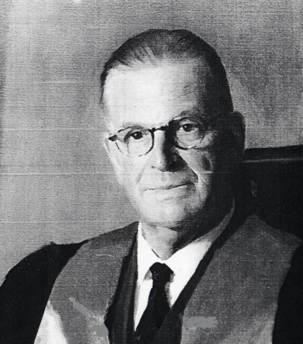
Sir Leonard was born as second son of J. H. Lindon, headmaster of Queen’s College School in Adelaide . His early education was at Geelong Grammar School and later at St. Peters College Adelaide. He was a first-class sportsman and achiever, having won the Old Geelong Grammarian’s prize and topping the South Australian Senior University examination.
He commenced his medical studies in 1914 but these were interrupted by the war (1915-1916) while he served in the Middle East . He was recalled to Adelaide to complete his medical course. He topped the final exam, was awarded the Everard scholarship and became a Rhodes Scholar. He studied physiology at Oxford and gained his clinical experience at the Guys and the London Hospitals . He became a Fellow of the London , and Edinburgh Colleges of Surgeons.
He returned to Adelaide in 1923 and practiced medicine and surgery at the rooms of Dr. Humphrey Marten, a leading physician who generously helped many other young professionals such as Drs Gilbert, and Simpson-Newland (All 3 were later knighted).He was an Honorary Assistant Surgeon to the RAH and ACH. He was elected a Fellow of the Australian College of Surgeons.
His major interest was Neurosurgery and with the support of the State Government in 1929 he visited neurosurgical centres in Europe and the USA, working with such eminent persons Sir Hugh Cairns in Oxford, and Harvey Cushing in Boston. On his return he established the first Neurosurgical Clinic in S.A. He pioneered cerebral angiography, and was the first in Australia to successfully to treat an aneurysm of the internal carotid artery. It is likely that he was the first to perform a Leucotomy in 1946. With Dr. L. O. Betts he established surgery on prolapsed intervertebral discs.
His liaison with the military continued, and in 1939 he served as a Lieutenant Colonel in the Middle East , becoming the Commanding Officer of the first Australian Neurosurgical Unit. He was mentioned in dispatches. He continued this connection for most of his life gaining many military honours.
His College activities involved Chairmanship of the College of Examiners and membership of the College Council. He became vice president and president (1959-1961).
His association with the Medical School was close. He was president of the student society, lecturer and examiner in surgery and tutor to St. Marks College. He loved teaching and was a supportive chief. The discussions during ward rounds and at home influenced many students and family members. His operative expertise was shared with others as he was keen to teach operative surgery. One surgeon remembers Sir Leonard helping him with a sympathectomy during his internship year.
The following collection of instruments is not neurosurgical. The neurosurgical instruments are preserved in the collection of the curator Professor Donald Simpson. However as common in that era even specialist surgeons were “multi-skilled”. In this instance most of the instruments are urological and confirm the extensive repertoire of surgeons at that time.
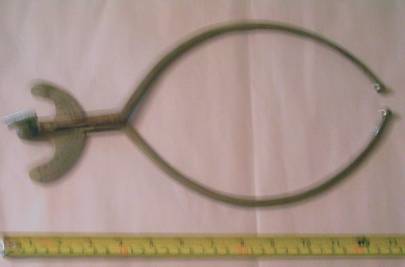 Pelvimeter: an instrument to measure the size of a female pelvis usually used by obstetricians.
Pelvimeter: an instrument to measure the size of a female pelvis usually used by obstetricians.
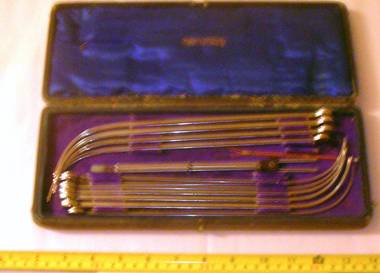
Urethral dilators used to dilate urethral gonococcal strictures
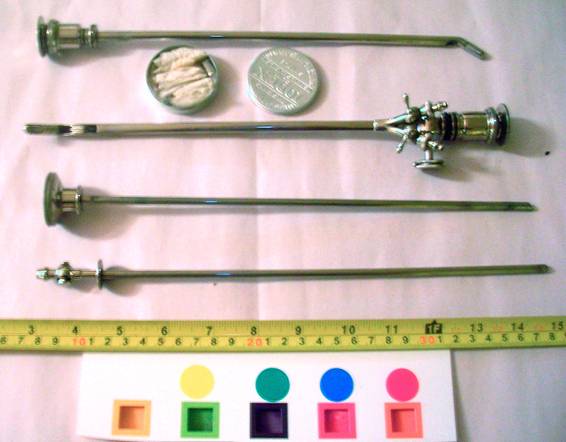
Cystoscope with obturator (lowermost), viewing lens and facility to introduce ureteric catheters (3rd from the bottom of photo) to perform a retrograde pyelogram.
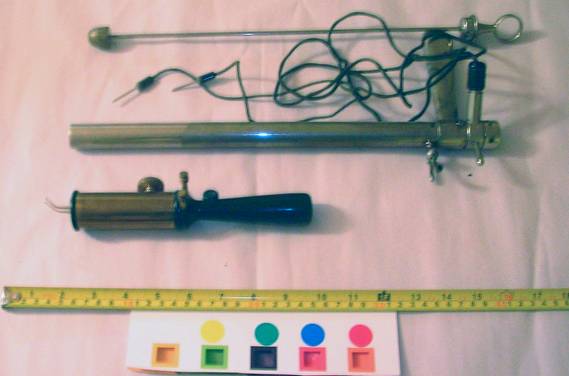 Sigmoidoscope with light supply used to view the rectum and lower sigmoid colon. A cautery device (lowermost) is included.
Sigmoidoscope with light supply used to view the rectum and lower sigmoid colon. A cautery device (lowermost) is included.
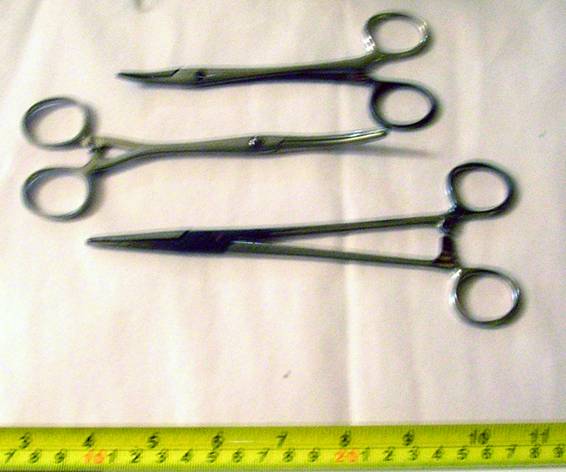
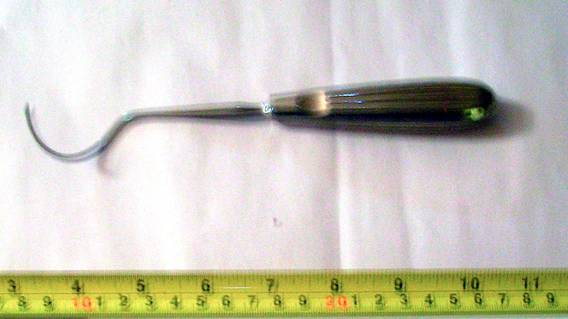
Aneurysm needle. Usually used to secure a leash of vessels.
These days it is used to place a tape and a vascular clamp to control the top end of an abdominal aortic aneurism
-o0o-